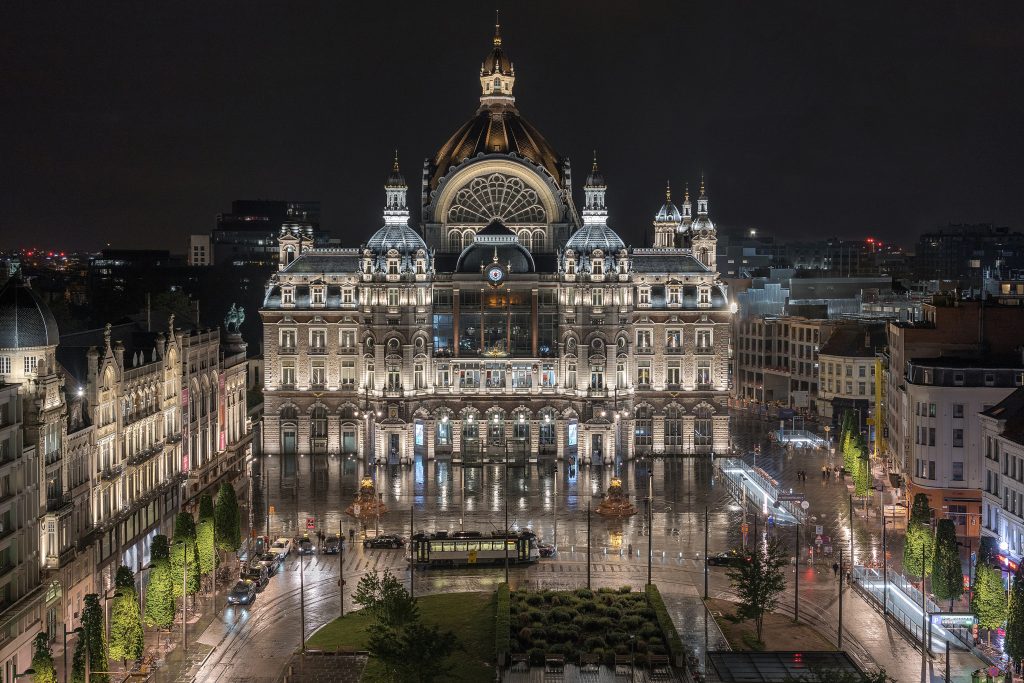Belgium’s famous train station experiences an all-LED renewal
Belgium’s Antwerp Central Station, named by Mashable in 2014 as the most beautiful railway station in the world and as the world’s fourth greatest train station by Newsweek in 2009, is also among the list of 2024 IES Award of Merit recipients. While these publications may have bestowed such grand titles upon the 19th-century station for its architectural complexity; local and intercity travel, as well as high-speed services to other countries; diamond gallery with more than 30 glitzy shops; or the four-floor, 15-attraction theme park inside the station—the traffic hub scored an IES Merit Award for its all-LED illumination, which was completed by European design firm Loomit [formerly Susanna Antico Lighting Design Studio (SALDS)] in December 2023.
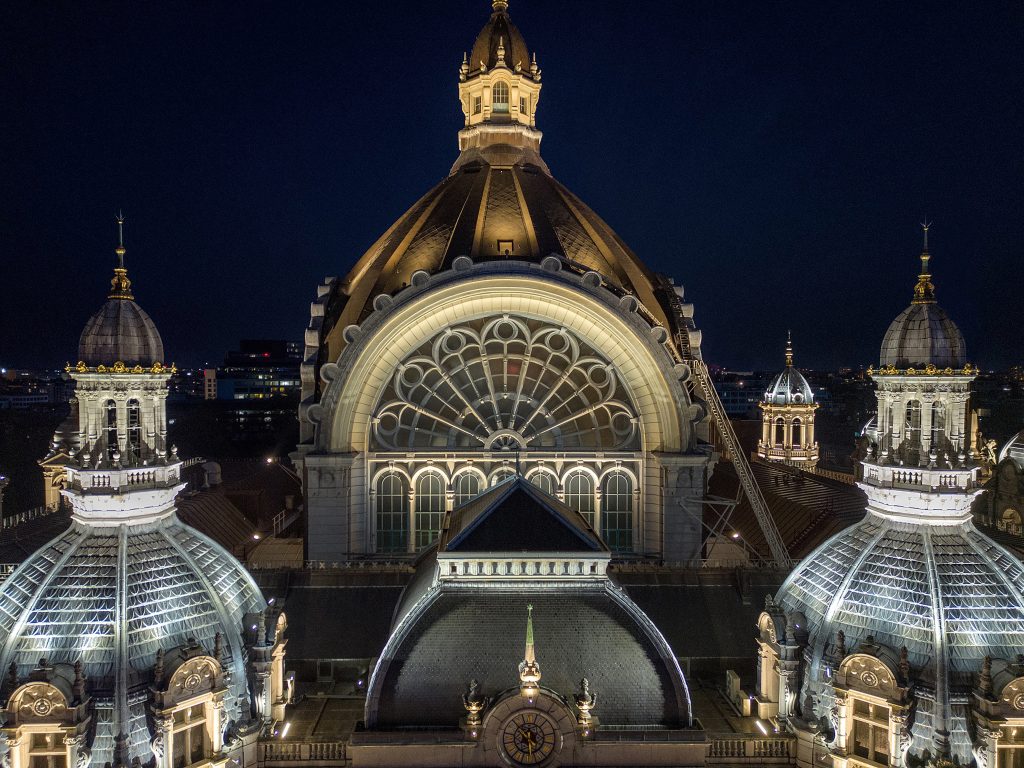
After a long-standing working relationship with the city of Antwerp—having previously developed the city’s lighting masterplan in 2009 and completed lighting designs for the Grote Markt and a neighboring cathedral with Flemish Gothic architecture throughout the years—SALDS set out to work on the Antwerp Central Station in 2021. The firm’s task was to transform a visually overlooked historic site into a noticeable nighttime landmark that upheld the building’s history, attracted more visitors, and stimulated the nighttime economy, as well as contributed to the beautification of the surrounding area. Designers accomplished these goals through the illumination of three of the building façades with special attention paid to the station’s north façade. An additional design challenge was to ensure that the new illumination solutions were easy to maintain and sustainable, while leaving historic materials such as stone and metallic elements undisturbed.
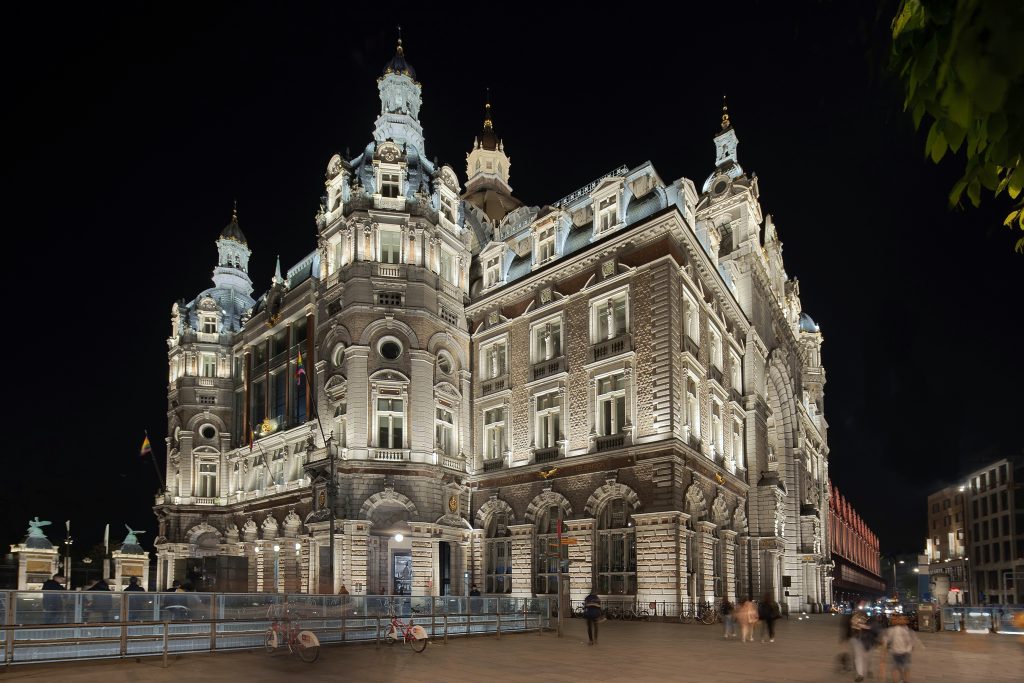
“Our goal was to capture the continuous movement and vibrancy of the station area by defining spatial perception and restoring the natural hierarchy of the space. Movement embodies the essence of an active, dynamic, and modern city,” said Susanna Antico, a principal at Loomit. “At stations, people and goods flow seamlessly within and across regions and nations, reflecting the rhythm of a city in constant motion. [We created] a new identity for the ‘railway cathedral’ by combining, enhancing, and reinforcing the lighting treatment to offer a contemporary, future-oriented experience of both the architecture and its surroundings.”
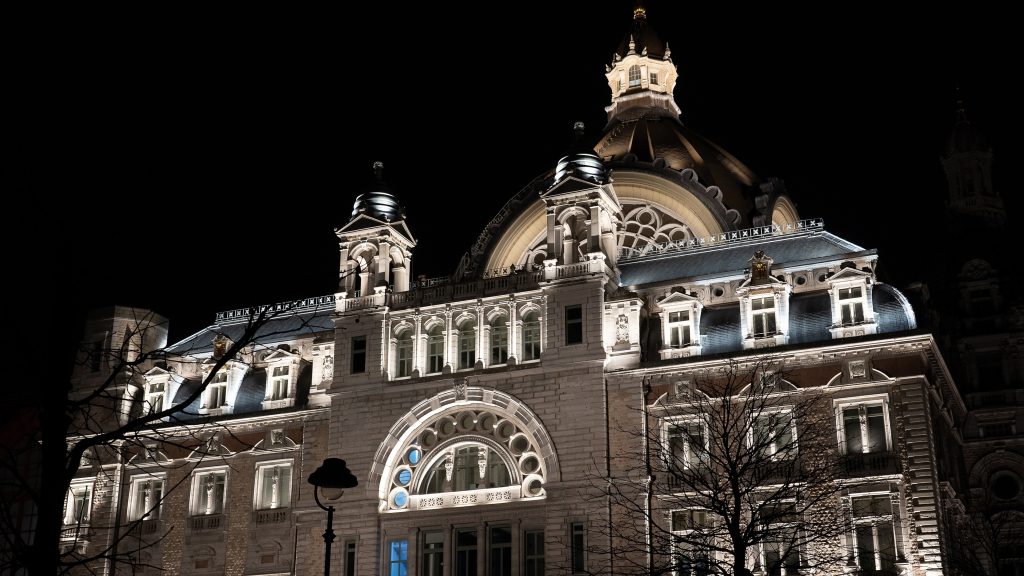
Antwerp Central Station has no shortage of constantly moving surroundings. At the north façade is the Astridplein square, a traffic-free, garden space for pedestrians to take in the grandeur of the station and broader city. The west façade serves as the train station’s primary entrance and connects the structure to the nearby historic town and Schelde River. Finally, the east façade rests adjacent to the Antwerp Zoo and neighboring 2,000-seat concert venue, the Queen Elisabeth Hall. While all three façades share identical elements and details, “each façade offers a unique appearance and engages with its specific surroundings in a different way,” said Antico. To accommodate for each of the façades’ usages and “personalities,” while minimizing light trespass and accounting for the building’s various viewpoints, the team focused on lighting vertical surfaces and establishing a hierarchy of light to emphasize architectural details via the strategic placement of lighting equipment.
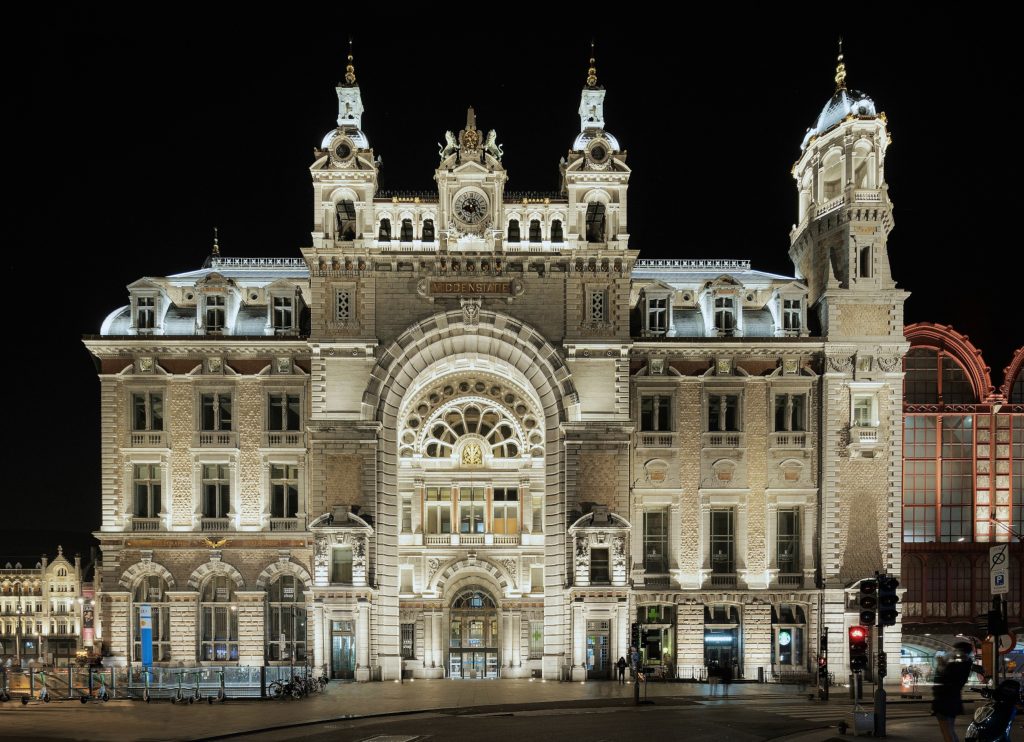
A Toolkit for Energy Efficiency
Though the €2,900,000 (~$3 million) project now has 820 luminaires and 5 miles of cabling, a significantly higher number of lighting points compared to the previous lighting design iteration that employed HID floodlights, the new system reduced the building’s energy consumption by 70%—a whopping 30% more than the EU2030 energy efficiency equirement for public lighting. The design team achieved this feat through the implementation of a fully dimmable LED lighting system, replete with small-sized luminaires with tailored optics, and a detailed DMX control system.
“The new system virtually eliminate[s] glare and light pollution, while lowering brightness levels to create a more holistic and tranquil perception of the building,” explained Antico. “The design enables viewers to appreciate the building’s geometry, materials, and finishes as a cohesive whole without losing sight of its intricate and captivating details.”
Luminaires from WE-EF were selected for use along with Schréder’s SculpLine and SculpDot fixtures and Meyer Lighting’s Nano Spot, based on established manufacturer reputations, recyclable materials, Marine-grade corrosion resistance, dimmability, CCT and color consistency, and ease-of-use. The compact size of the selected luminaires allowed the team to conceal them behind the building’s envelope and mount them close to objects on the façades’ surfaces—making the light sources nearly invisible to visitors during the day, thus protecting the station’s architectural aesthetic.
In addition to myriad tools, the project’s control system brings the design to life. Antico explained, “SALDS defined the overall specifications, including detailed performance requirements for the control system and software. We also designed the lighting scenes themselves—this involved grouping the luminaires into various control units and determining their output levels for each specific scene. The hardware is a full DMX system with an optional interface to DALI, capable of controlling 120 channels, leaving ample capacity for future needs. The software is remotely accessible via Wi-Fi and 4G, with a manual override feature for on-site adjustments.” The system allows for individual control over each luminaire and includes a monitor to detect malfunctions.
Antwerp Central Station transitions through three basic lighting scenes nightly: Early Evening, Late Evening, and Very Late Night. The first scene begins at sunset and remains until civil twilight, when the soft, ambient light begins a smooth, 10-minute fade into the next scene. Late Evening then provides “a rich and regal monumental lighting scheme,” explained Antico. It runs until midnight, when Very Late Night takes over after a five-minute fade and lingers until the next morning, offering visitors an impactful visual with increased safety, security, and wayfinding. In addition to the nightly scenes, the control systems are set up with nearly 30 additional programmed scenes which can be activated on demand for seasonal events and holidays.
The project’s improvements “foster a stronger sense of security,” said Antico. “By focusing on the vertical surfaces, we have enhanced the perception of space, orientation, and wayfinding for those in the surrounding areas…At night, the lighting acts like a magnifying glass, accentuating materials and finishes, bringing out their true splendor.”
THE DESIGNERS |
- Susanna Antico is a principal at Loomit.
- Samuel Vespo is a principal at Loomit.
- Daniela Luppacchini is a designer at Loomit.
- Gad Giladi is an independant consultant.


